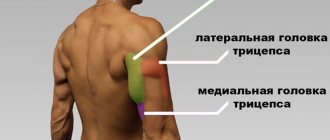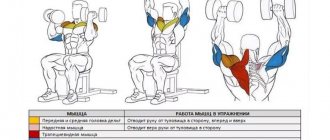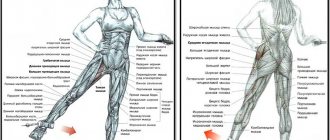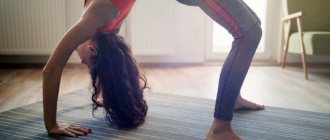Initially, this technique appeared as a complex of physical therapy for the rehabilitation of athletes. Nowadays it is also often used to restore mobility and flexibility to the body. In addition, flex training has become popular among group and individual trainers; they are held in gyms along with yoga and stretching.
Trainers divide flex into two levels: beginner and advanced. It is better to start training with basic exercises. To perform them, you do not need any special equipment: you need comfortable sportswear and a yoga mat if the classes take place on a hard surface.
Benefits of classes
The flex system has gained its popularity due to its quickly visible results. Instead of training one muscle group per workout, the program allows you to work all muscles. In this case, a person receives a small load during training and recovers quickly. The complex does not require adherence to strict diets or the use of additional medications. It is enough to balance your daily diet. The effect of rapid weight loss has been confirmed by many people who have practiced this type of fitness.
Exercises should be performed slowly, without sudden movements. This regularity helps to relax all muscles and remove lactic acid from them.
The absence of sudden movements allows you to avoid injury to the tendons, so flex is valued not only by ordinary people, but also by professional athletes.
Long-term stress causes muscles to become unable to function properly. The neck muscles are especially affected. When not functioning correctly, they disrupt the functioning of the blood vessels that carry oxygen to the brain. The result of such disorders is frequent headaches, irritability and chronic fatigue.
Regular exercise will help alleviate the condition, avoid the emergence of new problems, and also prevent early aging of joints and brittle bones.
Flex fitness is useful for people with gastrointestinal diseases. Slow muscle stretching normalizes the functioning of the circulatory and respiratory systems and internal organs. This speeds up metabolism and strengthens the immune system. A person not only stops getting sick, but also reacts calmer to stressful situations. The presence of yoga elements in the program helps you relax physically and mentally.
In addition to visible results, classes help improve self-esteem, patience, calmness and self-discipline.
Group Flex Training
Flex description
Flex
- This is a specific stretch.
What goals do they pursue by doing it? First of all, it benefits the whole body, helps improve overall health and well-being. Stretching improves blood circulation and joint function. It should be understood that non-stretched muscles may be more likely to be subject to injuries such as dislocations, sprains, and sometimes fractures. Those who stretch avoid premature aging of bone tissue and joints. In addition, people who stretch feel better and have a great mood. Flex classes increase self-esteem, teach patience, calmness, and improve the body's endurance. Flex training
is a whole complex developed on the basis of such programs and techniques as Pilates, Fitness Yoga, Stretching, Callanetics. Many of the exercises of the above methods are found in the Flex complex.
Types of flex classes
Classes to improve stretching are divided into:
- active
- passive
Active is characterized by controlled rocking with a gradual increase in deflection. Deflection occurs until the joints are stretched to a certain position and the body is fixed in a pose for a short time. Active stretching is practiced in group and individual classes.
Example exercises
- From a lying position on your stomach, you need to simultaneously raise your arms and legs. Stay in the pose for 15-25 seconds and return to the starting position.
- While lying on your back, begin to raise your legs until the angle between the floor and your legs is 90 degrees. Stay in the pose for 20-30 seconds and return to the starting position.
- Lying on your back, rest your legs on your knees, feet pressed to the floor, arms extended along your body. Start the exercise by stretching your arms perpendicular to the floor. Stretch your arms up without lifting your body for 30 seconds. Then return to the original position.
Passive stretching differs from active stretching in the presence of extraneous influence. To achieve the desired degree of load, the help of a partner is required. There is a disadvantage to passive stretching. If the partner does not set a sufficient load, flex training will be useless. But if the load is high, the possibility of injury increases. Therefore, this type of training is practiced only under the supervision of an instructor.
Example exercises
Face down arm stretch. The first partner lies face down, the second stands over him so that his legs are located on either side of the first partner's torso. The second partner begins to carefully pull the right and left hands alternately. Gradually the range of movements increases. During stretching, the first partner does not strain the muscles, but tries to relax. He should not experience pain or severe discomfort.
Flex Lewis training program
- Monday: Chest
- Tuesday: Back, biceps
- Wednesday: Rest
- Thursday: Chest
- Friday: Shoulders, triceps
- Saturday: Quadriceps (before lunch), hamstrings (after lunch)
- Sunday: Rest
Basic exercises used
Now we smoothly move on to the main ingredients of the training. T-bar rows are the main mass exercise in the arsenal of the current champion of the small Olympia.
“I tend to underestimate myself rather than overestimate myself. So I start training with light weights (40-60 kg), and then I can add another 20 kg. Before starting intensive training, I need to test my own capabilities and understand what I am capable of at a given moment in time. With my current lifestyle and frequent travel, my general physical condition may change from week to week. There are days. when I’m capable of a lot, but there’s also a week where I have to train sparingly,” Lewis clarifies his intuitive attitude towards training.
“I try to keep my back at an angle greater than 45 degrees. Even though my lifting weights have skyrocketed in the last couple of years, I don't pay much attention to the weight of the barbell. Of course, I understand that working with heavy weights allows you to gain mass and gain the necessary shape, but I am not ready to sacrifice my form for the sake of a massive barbell. I know a lot of people who work with quite impressive weights, but remain “raw”.
First of all, I rely on my own health. I have been able to stay injury-free thanks to this careful approach to training. Over the last couple of years I have become more, using a method that is profound in every way. There is an inextricable connection between your subconscious and muscle growth. When performing exercises, I try to consciously squeeze and stretch the muscles, increasing their contraction depending on the phase of movement. At the same time, I continue to mentally monitor its entire trajectory. In fact, working with heavy weights in itself is not a determining factor in muscle growth,” Flex concluded.
Flex Lewis back muscle training
- Horizontal block rows to the waist 3-4 sets 10-15 reps
- T-bar row 3-4 sets 10-15 reps
- Bent-over dumbbell rows 4-5 sets 24-25 reps
- Lever rows 3-4 sets 10-15 reps
- Close-grip vertical row 3-4 sets 10-15 reps
- Stand deadlift 3-4 sets 10-15 reps
- Hyperextension 3 sets 10-15 reps
Lewis notes several details in the technique of performing dumbbell row exercises. First, he performs two-armed rows, as opposed to the common one-armed version. Secondly, Flex emphasizes movement in the direction from front to back. At the same time, he tries to move his elbows up as high as possible. “I do deadlifts while standing. Most athletes who try to perform a similar movement lose their balance. For this reason, many people find it easier to perform this exercise on an incline bench, face down,” explains Lewis.
Improvising
At the very beginning of our article, we drew an analogy between a bodybuilder achieving the desired result and a chef creating works of culinary art. So, in order to improve the taste of the dishes served each time, a good chef needs to experiment. All of the above is completely true for the brilliant bodybuilder and trainer Flex Lewis. Once you talk to him longer, he will share completely unique techniques for performing almost any exercise. Some of Lewis breaks his sets into three parts.
“I start with 10 regular reps with a full, good release and contraction of the latissimus dorsi. Then, for the next 10 repetitions, I do an accelerated repetition at the maximum amplitude of movement and a smooth slow movement to the starting position. Moreover, which is very important when performing deadlifts, I do not include the biceps in the work and monitor the constant contraction of the lats. After this, I proceed to perform full repetitions with a three-second delay in the contraction phase. After only 4-5 such repetitions I am approaching complete failure. I started using this method quite recently, and I must say that I am seeing excellent results!” Lewis states.
Variety
Agree, there are few people who are ready to eat the same dish every time? Similarly, the “Welsh Dragon” does not want to repeat itself in training and often makes changes to the usual work routine. He can do pull-ups anywhere, anytime. “When performing pull-ups, it is very important for me that the biceps are practically not involved in the work, as are other auxiliary muscle groups. I usually do an explosive upward movement, pause at the top with maximum muscle contraction, and slowly lower down. Although I don’t do pull-ups that often,” Lewis shares with us. Flex prefers cable rows to pull-ups: “For straight-grip lat pull-downs, I use a narrow grip with a V-handle.”
“Typically, I don’t need a warm-up approach in this case. The general principles of execution are no different from other types of deadlifts: no sudden movements, full control and an emphasis on contraction, remembering the inadmissibility of relaxing the back along the entire trajectory of the movement,” says Lewis.
Specialization
Each master has something of his own that distinguishes him from all others. In the case of Lewis, it is worth emphasizing that his specialty is high detailing of the lower back. This is especially noticeable when Lewis shows off his rear double biceps. It can be stated that he has the best spinal erector muscles in modern bodybuilding. It’s no wonder that the champion works this area every week, completing his back workout with stand deadlifts and hyperextensions.
As for the deadlift, Flex sets the limiters in the power frame like this. so that the bar lying on them is just above the knee, and he does not have to involve his legs in the work, but concentrate all his attention on his back. Lewis's take: “I love doing this exercise. I usually do it slower than other athletes and leave it at the end of the complex on the back, when fatigue has already accumulated. I prefer this kind of strength training style, which allows me to feel the work of each muscle in a single repetition. Typically I do at least 10 reps. I remember in March 2013 in New Zealand I managed to do 15 repetitions with a weight of 306 kg.”
The final part of the Lewis complex is hyperextension. A word from Flex: “In fact, the arsenal of exercises for the lower back is not very rich. So I stick to the traditional way of doing hyperextensions, making only minor adjustments.”
Dinner is served
To complete the analogy with cooking, we note that in bodybuilding, just as in the case of preparing a dish, the result of the work done is the final product. All of Lewis' efforts are aimed at giving his back a truly champion look. Flex was able to demonstrate a whole new level of size and bulk in the rear double biceps pose at the 2013 Mr. Olympia in the 212 lb division.
He managed to present a brilliant form to the audience, which served as the basis for the judges to put Flex on the highest step of the podium. But you need to know Lewis to understand that success is not a reason for him to slow down. Rest assured, Flex Lewis will continue to train to the limit to achieve the maximum result, which could be another championship title!
Training mode
Flex is used as an independent workout or an addition to strength and cardio training. Any beginner can master simple exercises. No additional equipment is required for classes, only comfortable sportswear and shoes.
The duration and regularity of training depends on your goals. To maintain tone and general health, it will be enough to exercise 30 - 60 minutes 2-3 times a week.
If you want to lose excess weight, the number of workouts should be increased to 4-5 times a week. Each body is individual, despite the small load, not all exercises may be suitable. If you feel discomfort and pain, you should eliminate the exercise and replace it with another.
Individual sessions
At the Molot fitness club you can attend individual classes , in which the instructor’s full attention is directed only to one person. The effect of training will appear much faster than after group flex classes . The trainer will make sure that all exercises are performed correctly and select the best ones for problem areas.
With a mentor, you can practice exercises that are not appropriate for a group lesson. Despite its apparent ease, passive stretching is practiced only under the supervision of an experienced certified trainer who can correctly calculate the load on each muscle group. If desired, you can get advice from a trainer on proper nutrition, methods of recovery after training, and much more.
Come to a flex workout soon, and by summer you will find the desired shape and improve your well-being.
You can purchase memberships to the Molot fitness club online. Hammer Nevsky, Art. mule. Dybenko" St. Petersburg, Ave. Bolshevikov, 18, shopping and entertainment complex "Nevsky", +7 (812) 425-39-39 Hammer Ladoga, st. M. "Ladozhskaya", st. Krzhizhanovskogo, 8, TRC "Ladoga", +7 (812) 425-39-39 Hammer of Valor
The main reasons to start flex training
- Integrated approach - Flex training exercises are aimed at developing flexibility of the whole body. The complex is selected in such a way as to affect various muscle groups.
- Posture and coordination - Flex-style workouts are designed not only to strengthen the body, but also to lose weight. By systematically performing a simple set of exercises, you can regain beautiful posture, make your movements graceful, giving them the effect of lightness.
- Health promotion - Flex training will strengthen the body's immune system and also help normalize the functioning of the cardiovascular system.
- Tension Relief – Another beneficial quality of flex training is the rapid release of tension after strength training. Stretching the muscles helps relax them, and the reduced intensity helps restore breathing and heart rate. Moreover, flex also relieves emotional stress. Elements of yoga, a slow pace of training and even breathing provide the effect of meditation and complete relaxation.
- Efficiency - Flex is a low-intensity program. It is highly effective, despite its lightness and simplicity. These exercises are suitable for beginners. The workout does not require physical preparation.
Exercises using the flex method will not only be an excellent addition to strength training. Such exercises are suitable for those who do not have time to conduct full training.










